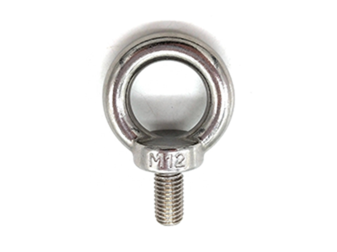Oct . 10, 2024 16:46 Back to list
10mm wall bolts
Understanding 10mm Wall Bolts Purpose, Types, and Installation
Wall bolts are essential components in construction and renovation projects, providing the necessary support and stability for various structures. Among the myriad sizes of wall bolts available in the market, the 10mm wall bolt (or bolt with a 10mm diameter) stands out due to its versatility and strength. This article will delve into the specifics of 10mm wall bolts, examining their purpose, types, and installation procedures.
Purpose of 10mm Wall Bolts
The primary purpose of a wall bolt is to create a secure connection between two structural elements, such as a wall and a fixture, or to anchor heavy items to a wall. With a 10mm diameter, these bolts are particularly useful for medium-weight applications, making them suitable for shelves, cabinets, brackets, and mounting equipment. Their design allows them to resist shear forces while providing excellent tensile strength, ensuring that they can reliably hold loads without failure.
Types of 10mm Wall Bolts
Wall bolts come in various types, each designed for specific applications
. Here are a few common types of 10mm wall bolts1. Expansion Bolts These are used for fastening to concrete or masonry walls. When the bolt is tightened, it expands a sleeve against the wall, creating a secure and strong hold. This type is particularly useful for outdoor installations or in garages where heavy loads are often supported.
2. Sleeve Anchors A sleeve anchor consists of a bolt surrounded by a sleeve that expands when tightened. It is ideal for concrete and can also be used in brick and block walls. The robustness of sleeve anchors makes them a popular choice for heavy-duty applications.
3. Lag Bolts Often used with wooden structures, lag bolts are large, heavy-duty screws that provide a strong anchor. When used with a washer, they distribute load evenly, making them ideal for securing wooden beams or posts to a wall.
4. Toggle Bolts These bolts are perfect for hollow walls, such as drywall. A toggle bolt features a pair of wings that fold close to the bolt when inserted through a hole in the wall. Once inside, the wings expand, providing a strong anchor point for attaching fixtures.
5. Plastic Anchors Common in lighter applications, plastic anchors are designed to expand within the wall upon installation. They are often used for hanging pictures and light shelves, providing adequate support for lower weight loads.
10mm wall bolts

Installation Process
Installing a 10mm wall bolt requires careful attention to detail to ensure the structure's stability
1. Prepare the Tools Gather tools such as a drill, appropriate drill bits, a wrench or ratchet, and a level. If using an expansion bolt or sleeve anchor, you may need a hammer and a screwdriver.
2. Mark the Location Determine where you want to install the wall bolt. Use a level to ensure that your markings are straight.
3. Drill the Hole Based on the type of bolt, drill a hole of the appropriate diameter into the wall. For expansion and sleeve anchors, ensure the hole depth matches the anchor’s length.
4. Insert the Bolt If using a sleeve anchor or expansion bolt, insert it into the hole before tightening. For toggle bolts, insert the wings through the hole and expand them inside.
5. Tighten Securely Use a wrench or ratchet to tighten the bolt. Ensure that it is secure but avoid overtightening, which can lead to damage.
6. Check Stability Once installed, test the stability of the fixture by applying gentle pressure.
Conclusion
10mm wall bolts are invaluable in the construction and home improvement sectors. Their various types cater to different installation needs, making them suitable for a broad range of applications. Careful selection and proper installation of these bolts ensure the safety and durability of any structure, allowing you to confidently hang, mount, and secure items to walls.


